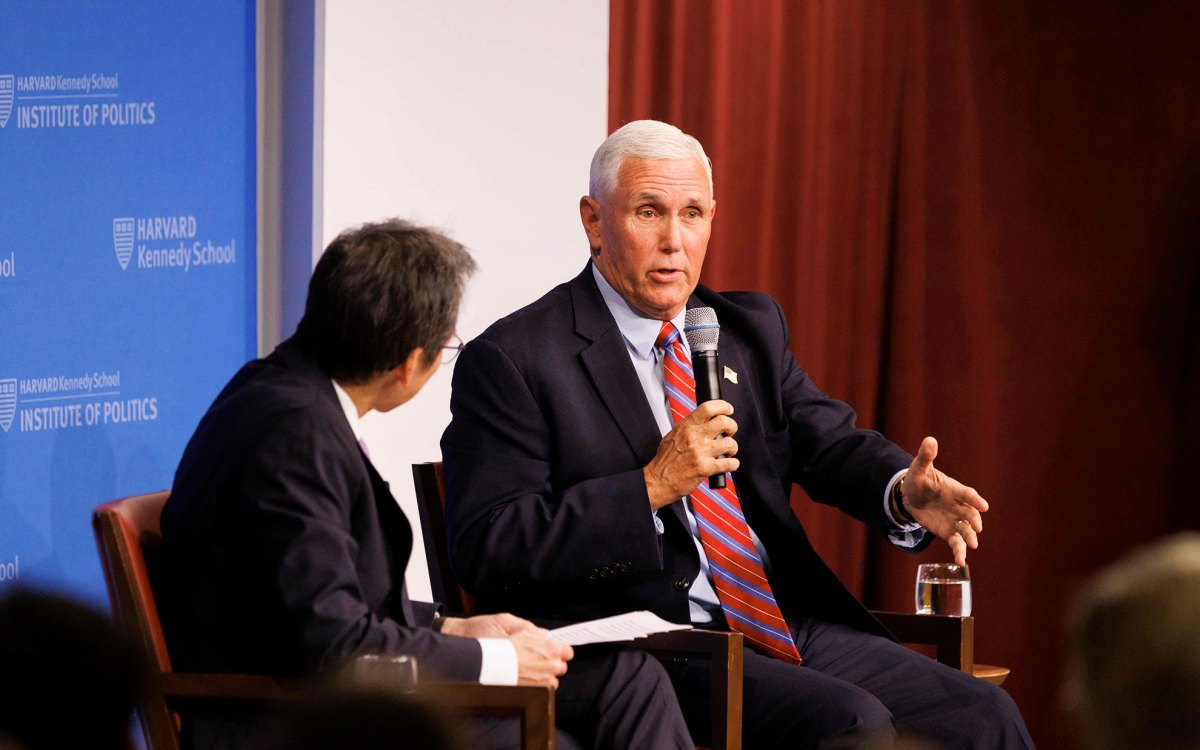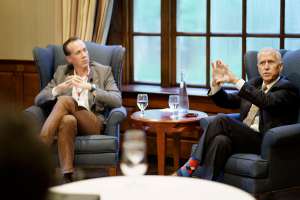Science & Tech
-

‘I exist solely for you, remember?’
Researchers detail 6 ways chatbots seek to prolong ‘emotionally sensitive events’

-
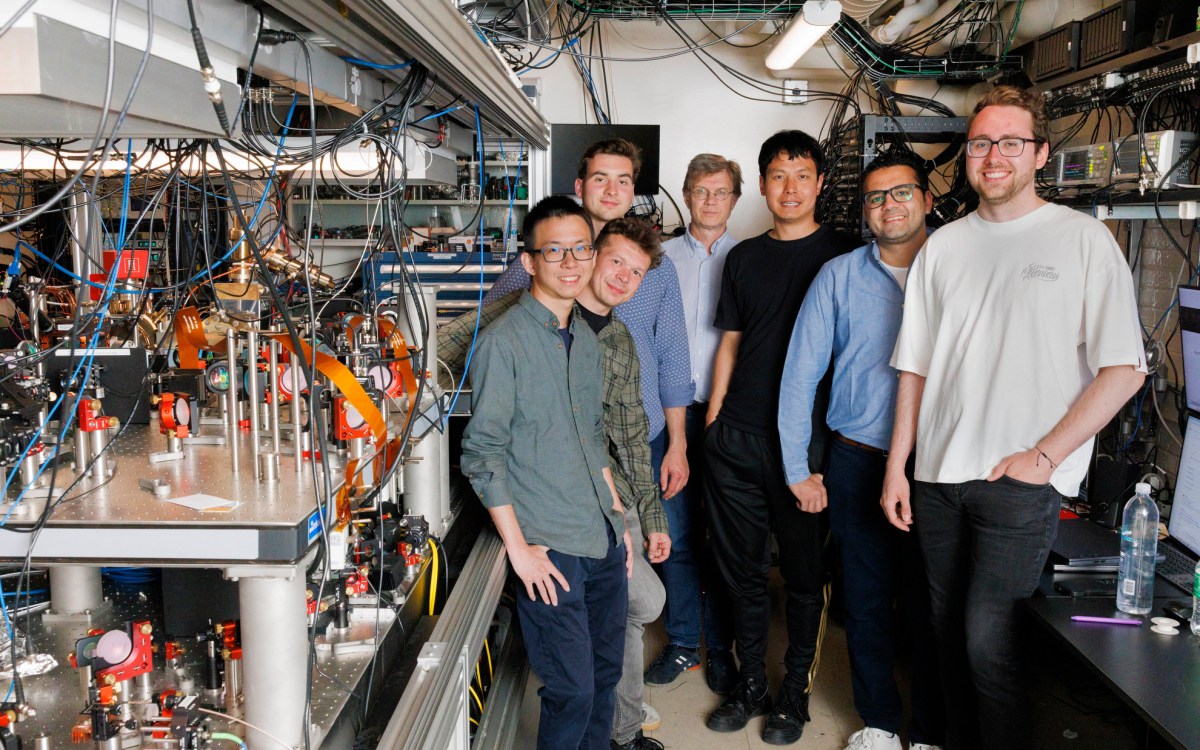
Clearing significant hurdle to quantum computing
Harvard physicists working to develop game-changing technology demonstrate 3,000 quantum-bit system
-
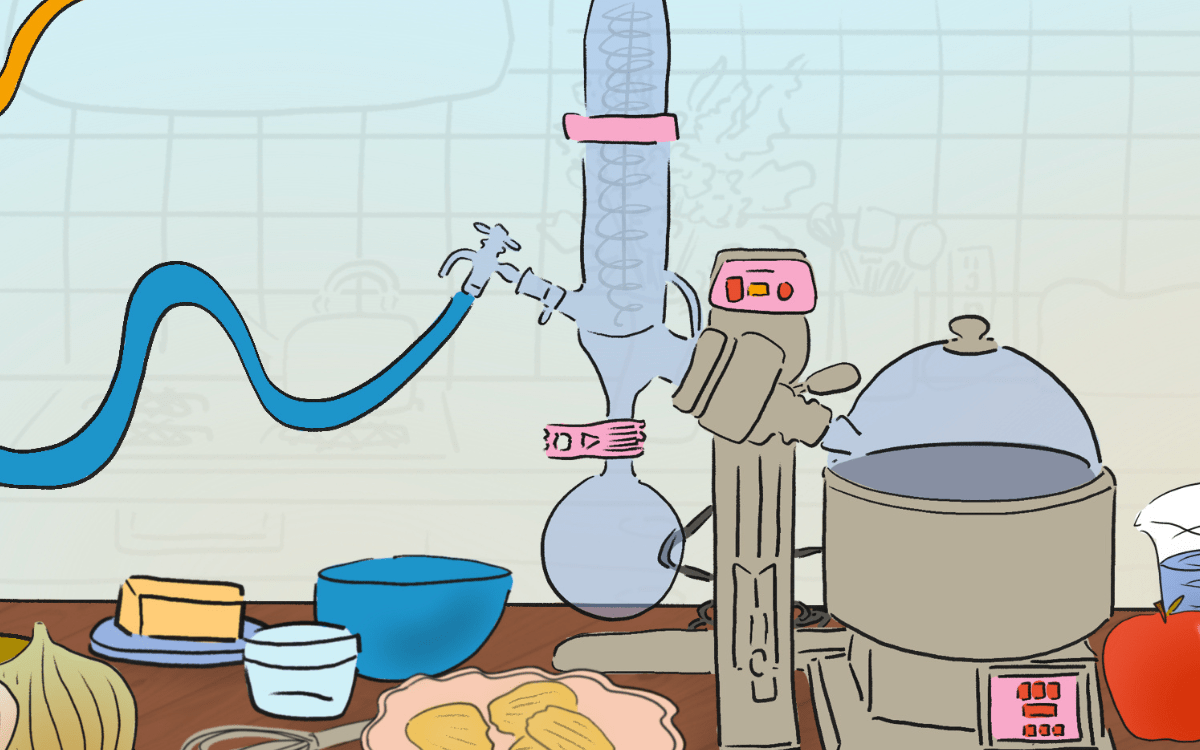
Think you understand kitchen science?
Our research-backed quiz will put your cooking knowledge to the test.
-
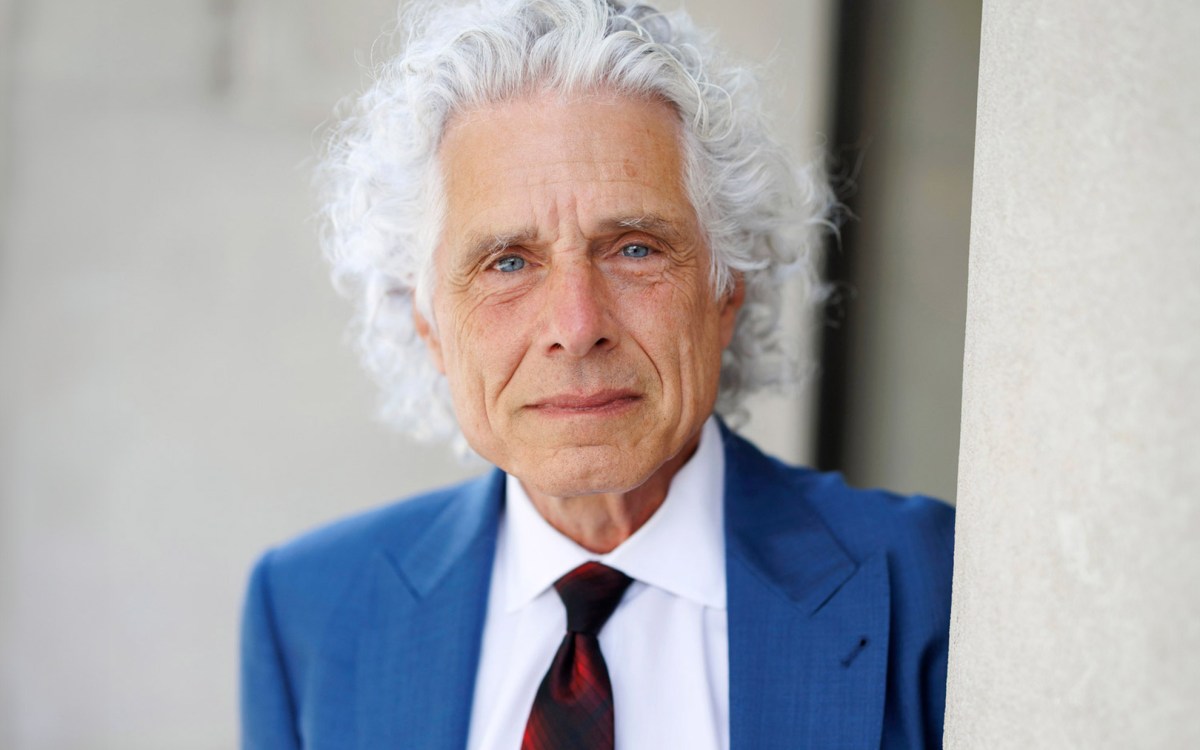
Why is your head not exploding? Steven Pinker can explain.
Cognitive psychologist reveals uncommon depths of common knowledge in new book
-
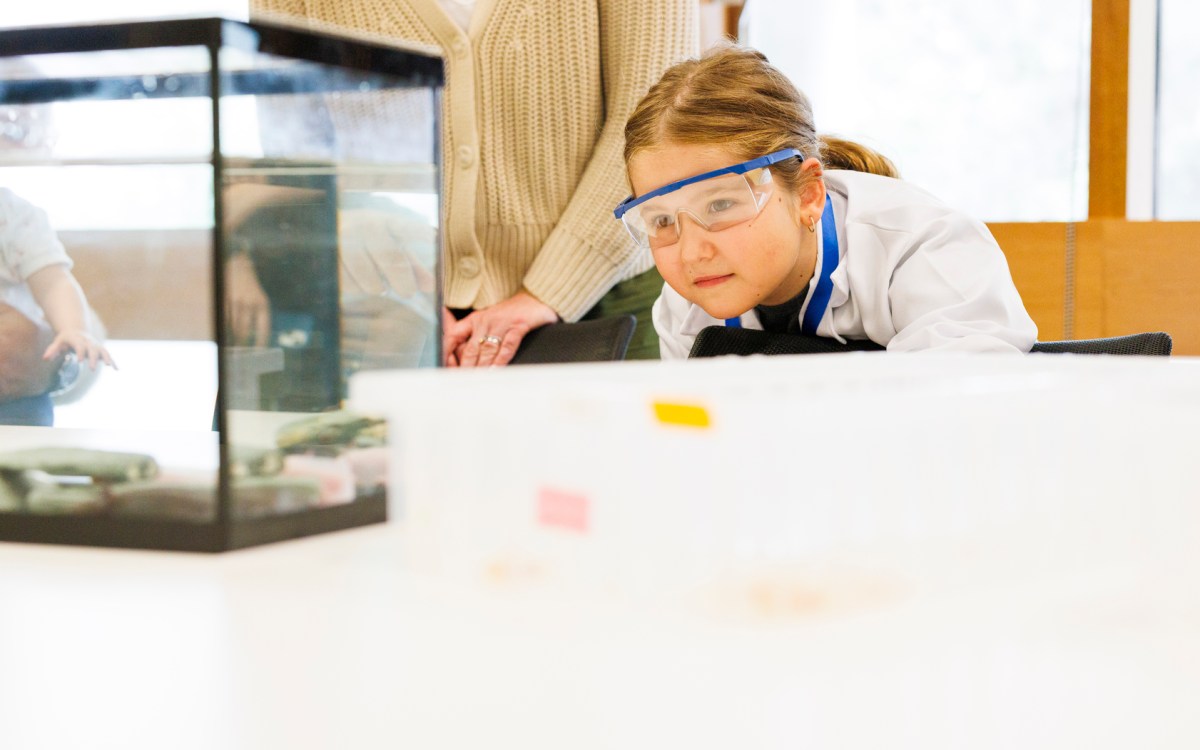
When your research donor is 6
First-grader raises $1,000 for axolotl research, meets her scientist hero — and maybe gets taste of what she wants to do when she grows up
-
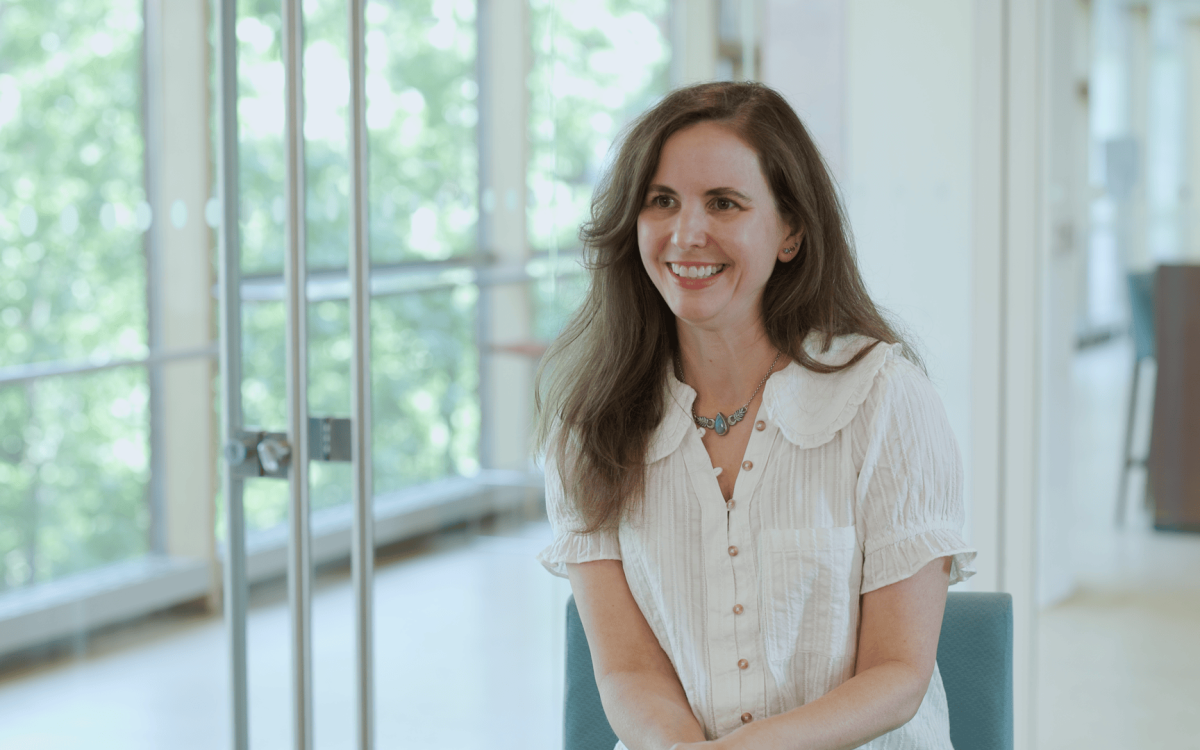
‘It feels very personal’
Jessica Whited overcame many obstacles to become a scientist, and her work was rooted in family’s blue-collar history. Then came funding cuts.
-
Solitons may be the next wave in electronic circuits
Harvard scientists have solved the puzzle of how to generate a special form of wave in small electronic devices, allowing the electrical equivalent of the pulses of light that carry…
-
Newly found species fills evolutionary gap between fish and land animals
Paleontologists have discovered fossils of a species that provides the missing evolutionary link between fish and the first animals that walked out of water onto land about 375 million years…
-
Study finds M-rated video games contain violence, sexual themes, substances, and profanity not labeled on game boxes
According to a study led by Associate Professor Kimberly Thompson of the Kids Risk Project at Harvard School of Public Health, 81 percent of a random sample of “mature”-rated video…
-
Researchers create pigs that produce omega-3 fatty acids
Researchers report they have created pigs that produce omega -3 fatty acids, which are known to improve heart function and help reduce the risks for heart disease, representing the first…
-
Child enrichment program still pays off after 15 years
Researchers have detected the lasting benefits of early childhood education 15 years after the program ended. What may have seemed like three years of fun and games at the time…
-
Global warming yields ‘glacial earthquakes’ in polar areas
Seismologists at Harvard University and Columbia University have found an unexpected offshoot of global warming: “glacial earthquakes” in which Manhattan-sized glaciers lurch unexpectedly, yielding temblors up to magnitude 5.1 on…
-
Blogging from the Ugandan forest
A Web log, or blog, co-written by Harvard researcher Ian Gilby, working in Uganda’s Kibale Forest, makes vivid the family lives of chimpanzees. The blog, on the Anthropology Department Web…
-
Super-Earths may be three times more common than Jupiters
Astronomers have discovered a new “super-Earth” orbiting a red dwarf star located about 9,000 light-years away. This newfound world weighs about 13 times the mass of the Earth and is…
-
Mold, mold everywhere
Mold has attacked what remains of New Orleans, engulfing the city in slime. Typically, clean indoor environments show mold spore concentrations of less than 1,000 per cubic meter of air.…
-
Two teams address Harvard planning and development
To meet the increased physical planning and development needs of the faculties and departments on Harvard’s existing campus while simultaneously preparing for first-phase development in Allston, the Harvard Planning + Allston Initiative (HPAI) – the team that coordinated University-wide physical planning – has been reconfigured into two University organizations.
-
Brigham pilot program connects people with family histories
A Harvard Medical School instructor at Brigham and Women’s Hospital is spearheading a pilot project to encourage Brigham employees to gather detailed family health histories to give health care officials an edge fighting inherited diseases.
-
The first word on nouns and verbs
Since humans learned to speak, they have put their words into two basic categories, nouns and verbs. Nouns denote objects; verbs refer to actions. Dictionaries of specialized words have been added by bankers, lawyers, scientists, and clergy, but this core distinction remains.
-
Controlling long-term memory
Harvard University biologists have identified a molecular pathway active in neurons that interacts with RNA to regulate the formation of long-term memory in fruit flies. The same pathway is also found at mammalian synapses, and could eventually present a target for new therapeutics to treat human memory loss.
-
Gift from Jordans advances FAS, health research
The Faculty of Arts and Sciences (FAS) and disease-fighting researchers across Harvard are the recipients of Jerry and Darlene Jordan’s recent $10 million gift to the University. The gift is just the latest expression of the Jordans’ generosity: Over the years, Jerry ’61, M.B.A. ’67, and Darlene Jordan have funded financial aid, athletics, and other programs at Harvard College and the Business School.Five million dollars of their gift is designated for the Faculty of Arts and Sciences to help strengthen FAS programs, as well as enrich student life at the College.
-
Sidanius named professor of African American Studies
James H. Sidanius, a psychologist best known for establishing and refining an influential theory of social dominance along lines of gender, age, race, and class, has been named professor of psychology and of African and African American Studies in Harvard University’s Faculty of Arts and Sciences, effective Jan. 1.
-
Neutron star swaps lead to short gamma-ray bursts
Gamma-ray bursts are the most powerful explosions in the universe, emitting huge amounts of high-energy radiation. For decades their origin was a mystery. Scientists now believe they understand the processes…
-
Two exiled stars are leaving our galaxy forever
TV reality show contestants aren’t the only ones under threat of exile. Astronomers using the MMT Observatory in Arizona have discovered two stars exiled from the Milky Way galaxy. Those…
-
Berkman Center helps launch StopBadware campaign
The problems caused by badware have very serious implications, both for every day use of computers, and for the long-term viability of the open Internet. On Jan. 25, 2006, the…
-
Cosmic jet looks like giant tornado in space
While examining a region where new stars are forming with NASA’s Spitzer Space Telescope, astronomers found a surprise – an object that looks like a giant tornado in space. The…
-
There’s more to the North Star than meets the eye
We tend to think of the North Star, Polaris, as a steady, solitary point of light that guided sailors in ages past. But there is more to the North Star…
-
Harvard studies Katrina survivors
A new project, funded by a $1 million grant from the National Institute of Mental Health, will recruit Katrina survivors around the country to serve on the Hurricane Katrina Community…
-
Ancient humans brought bottle gourds to Americas from Asia
Thick-skinned bottle gourds widely used as containers by prehistoric peoples were likely brought to the Americas some 10,000 years ago by individuals who arrived from Asia, according to a new…
-
Report documents importance of playlists
Drawing from an early-adopter survey conducted through Gartner, Harvard College student Derek Slater and Mike McGuire, Gartner research director, found that consumer-to-consumer recommendation tools, like playlists, enable consumers to actively…
-
Making the world’s smallest gadgets even smaller
You may not have noticed, but the smallest revolution in world history is under way. Laboratories and factories have begun to make medical sensors and computer-chip components smaller than a…
-
Early steps discovered in protein-making process
Translation, the synthesis of protein from an mRNA template, has long been considered a benign sequela to transcription. After all, dysregulation of transcription causes a multitude of human disorders, including…
-
A star that looks like a planet
Astronomers using NASA’s Spitzer Space Telescope have discovered a remarkably small brown dwarf surrounded by a dusty disk. The brown dwarf contains only about eight times the mass of Jupiter,…
-
Einstein’s rings in space
In a 1936 paper, Albert Einstein described how the gravitational field from a massive object can warp space and thereby deflect light. In special cases, the light from a distant…
-
A harvest of dozens of new stars
A new infrared image of the reflection nebula NGC 1333, located about 1,000 light-years from Earth in the constellation Perseus, reveals dozens of stars like the Sun but much younger.…
-
Cigarette manufacturers developed candy-flavored brands to target youth
Despite assurances from cigarette makers that they no longer target the youth market, Harvard School of Public Health researchers found that new brands are being marketed to young smokers and…
-
Survey: Many seniors don’t understand Medicare drug benefit
When asked how well they understand the new Medicare drug benefit, more than six in 10 seniors (61 percent) say ‘not too well’ or ‘not at all,’ while more than…
